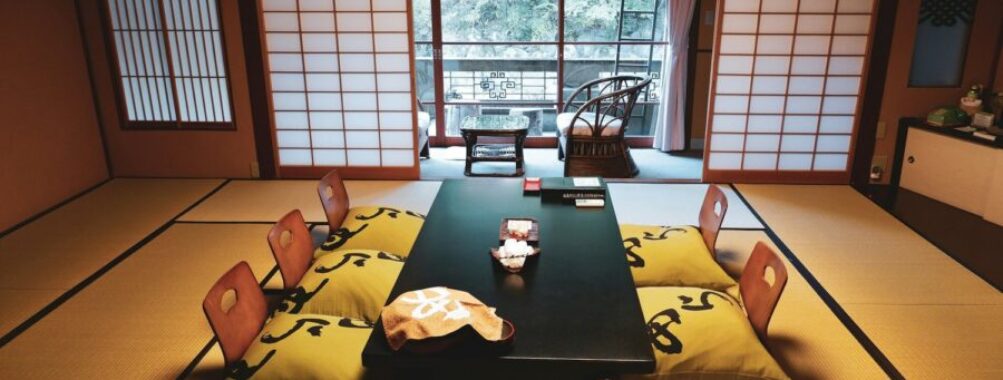
How to Book Japanese Ryokan Online in English: 7 Insider Tips for a Seamless Reservation Experience
Ever dreamt of curling up under a cozy down futon, gazing out at a tranquil Japanese garden, but felt a little daunted by the idea of booking a ryokan without knowing Japanese? Good news: you can absolutely book your dream ryokan online in English—even if you can’t say more than “arigato.” I’ve spent more time than I care to admit swapping emails and wrestling with translation apps, but these days, a bunch of booking platforms make it surprisingly easy for international guests.
Still, not every ryokan pops up on the big-name sites. Some of the best ones, the real hidden gems, take a little hunting. Each site—think Booking.com, Rakuten Travel, Japanican—offers a different selection and perks, so you’ll want to hop between a few. Let me walk you through what’s actually worked for me, plus a few curveballs you might not expect when booking.
Table of Contents
- Key Takeaways
- What Is a Ryokan?
- Key Features of a Ryokan
- Traditional Japanese Hospitality
- Historical Significance and Origins
- Types of Ryokan in Japan
- Onsen Ryokan
- City Ryokan
- Luxury Ryokan
- Rural and Regional Ryokan
- Popular Ryokan Destinations
- Kyoto and Kansai Region
- Tokyo and Surrounding Areas
- Osaka, Sapporo, and Hokkaido
- Famous Onsen Towns: Hakone, Kusatsu, Izu Peninsula, Kinosaki, Arima Onsen
- How to Book a Japanese Ryokan Online in English
- Searching for Ryokan with English-Friendly Booking Sites
- Reservation Process Step by Step
- Payment Methods and Policies
- Confirmation and Communication
- Comparing Major Ryokan Booking Platforms
- Booking.com Advantages and Limitations
- Using Agoda for Ryokan Reservations
- About Japanican and Rakuten Travel
- When and Why to Consider a Traditional Travel Agent
- Benefits for Unique or Remote Ryokan
- Language Support and Customization
- What to Expect During Your Stay
- Room Types and Tatami Layouts
- Yukata and Etiquette
- Onsen Bathing Tips
- Dining at a Ryokan
- Kaiseki Dinner Experience
- Breakfast Traditions
- How to Communicate Dietary Restrictions
- Essential Tips for Booking Success
- Booking in Peak Versus Off-Peak
- Special Room Requests
- Cancellation and Change Policies
- Frequently Asked Questions
- What are the top websites for booking a Ryokan in Japan with English support?
- Can I book a Ryokan in Japan with onsen facilities directly online?
- Are there any hidden costs to be aware of when booking a ryokan through English-language platforms?
- What should I consider when choosing the right Ryokan for my stay in Japan?
- How far in advance should I make a reservation for a popular Ryokan in tourist areas of Japan?
- What are essential etiquette guidelines to know when staying at a Ryokan in Japan?
- Book Your Dream Experience
- More Travel Guides
Key Takeaways
- Track down authentic ryokan in Japan and book them in English.
- Jump between booking platforms for the best deals and choices.
- Know what to expect so you can really enjoy your ryokan stay.
What Is a Ryokan?
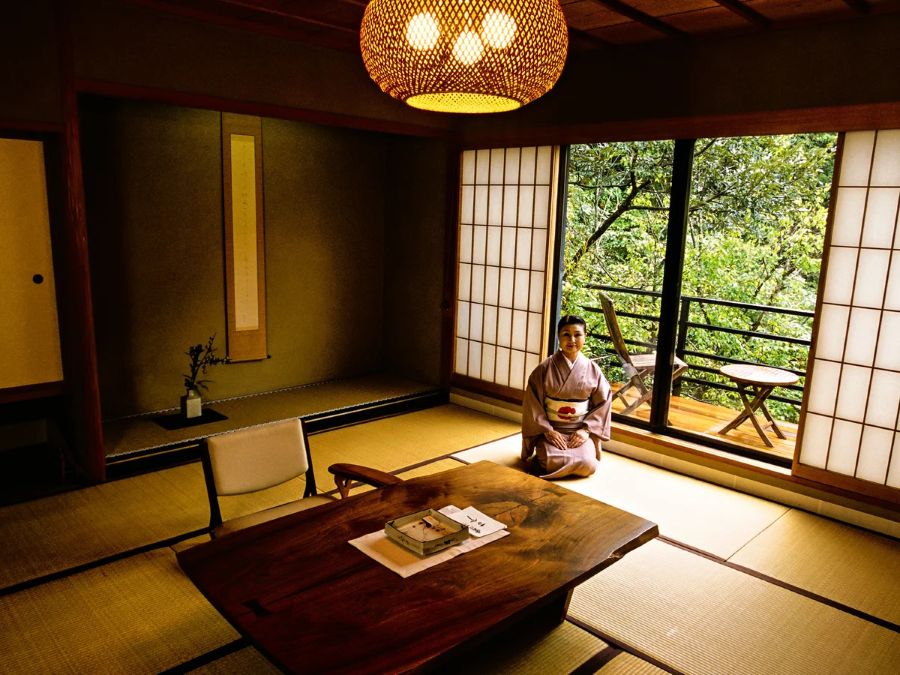
A ryokan stay is your ticket to Japanese culture in a way hotels just can’t touch. The traditional rooms, the unique Japanese hospitality, even the pace of life—everything feels a little different, and honestly, a little magical.
Key Features of a Ryokan
A ryokan is way more than just a place to crash. The moment you walk in, you’ll spot the details: tatami mat floors, sliding paper doors, futons tucked away until bedtime. The whole vibe is calm—like you’ve stepped into a quieter, older version of Japan.
You’ll take off your shoes at the door. No exceptions, really. That’s just the start of the whole ritual. Many ryokan feature shared baths called onsen, filled with mineral-rich hot spring water. Sometimes you get a garden view, or the soft sound of water trickling nearby. Even the architecture seems to whisper “harmony.”
Staff often bring your meals right to your room. Kaiseki dinners (those multi-course feasts) show off seasonal ingredients and artful plating, and you’ll probably see dishes you’ve never encountered before. It’s honestly a highlight of the whole experience.
Traditional Japanese Hospitality
At the heart of every ryokan is omotenashi—that special Japanese hospitality where the staff anticipate what you need before you even realize it. They want you to feel relaxed, cared for, and genuinely welcome, but never smothered.
This isn’t the kind of service you get at chain hotels. It feels more like visiting a friend’s home—if your friend happens to be a master of making you comfortable. Every little gesture aims to show respect and thoughtfulness.
I’ll never forget mentioning my love for green tea during my first stay. Later, the attendant surprised me with a special variety from a local farm. That’s omotenashi. It’s subtle, not flashy, but it really sticks with you.
Historical Significance and Origins
Ryokan have been around for centuries. They date all the way back to the Nara Period—8th century Japan, if you can believe it. Back then, travelers and Buddhist pilgrims would stop at simple lodgings called fuseya. Over the years, ryokan evolved to serve merchants and samurai, especially in the bustling Edo Period.
These inns go way beyond just a bed for the night. They’re woven into the story of Japanese culture, with a focus on harmony, calm, and respect. You get a peek into daily life from the past, and so many little traditions have survived the centuries.
A lot of ryokan are still family-run, clinging proudly to their roots—room layouts, seasonal dishes, even the way they tend their gardens. When you book a ryokan, you’re not just choosing a place to sleep; you’re stepping into a living piece of history.
Types of Ryokan in Japan
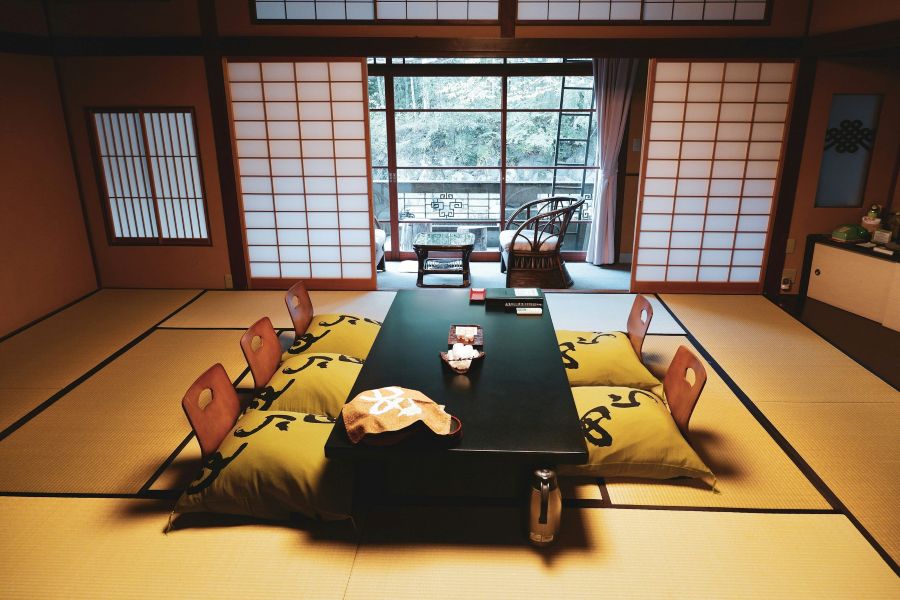
Not all ryokan are created equal—I learned that the bumpy way on my first trip. What you get depends a lot on the type you pick, from city hideaways to countryside escapes. The atmosphere, the baths, the service… it all shifts.
Onsen Ryokan
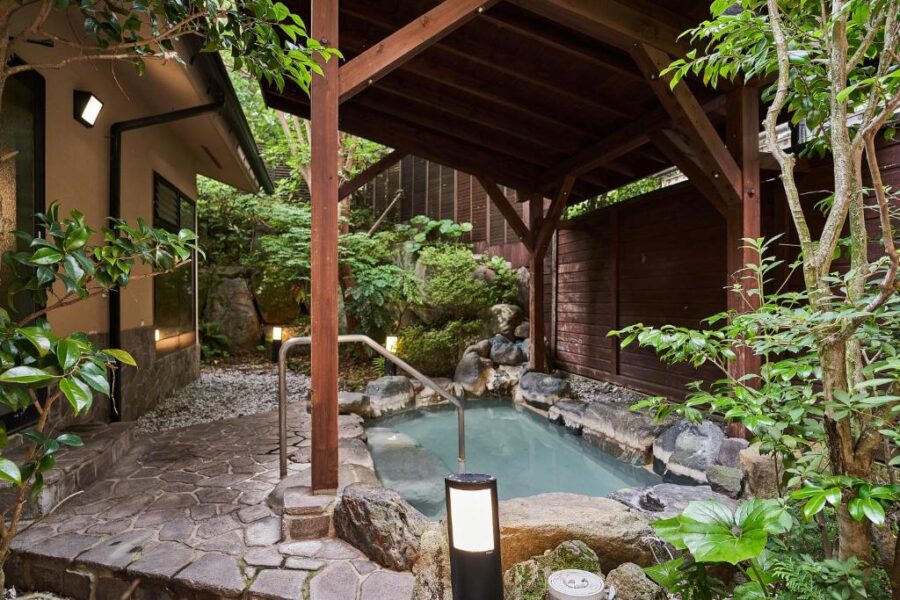
Onsen ryokan are the ones you see splashed across travel magazines, with those dreamy outdoor baths. These inns revolve around natural hot springs, or onsen. You’ll usually find them in classic hot spring towns like Hakone, Kusatsu, or Beppu.
The main event is the bath. You’ll soak in mineral-rich water, sometimes with a mountain or river view right outside the window. Most baths are shared, but some inns offer private onsen rooms—perfect if you’re feeling shy (I was, at first). If you can, try both.
Meals here are usually kaiseki style, loaded with seasonal flavors. Staff really go all out with hospitality, and before you know it, you’re in your yukata robe being led to dinner. It’s a completely pampered feeling.
Quick Facts Table:
| Feature | What to Expect |
|---|---|
| Hot Spring Baths | Yes, communal and/or private |
| Location | Onsen towns, rural areas |
| Meals | Kaiseki, seasonal |
City Ryokan
City ryokan have a totally different vibe. They’re tucked into busy neighborhoods, sometimes just steps from train stations or shopping. You won’t get sweeping mountain views, but you do get quick access to city action—ideal if you’re short on time or just not in the mood to lug your suitcase uphill (I’ve been there).
Rooms run smaller, but you still get the classic tatami and futon setup. Some city ryokan throw in modern perks like Wi-Fi or even a mini convenience store in the lobby. If you want to try a ryokan without leaving Tokyo, Osaka, or Kyoto, these are your best bet.
Baths here tend to be smaller, and sometimes it’s just a regular tub—not a real onsen. If that matters to you, double-check before booking. But for a fast dose of culture without sacrificing city convenience, they’re hard to beat.
| Feature | What to Expect |
|---|---|
| Bath | Often small, not always onsen |
| Location | Busy cities |
| Modern Amenities | Sometimes included |
Luxury Ryokan
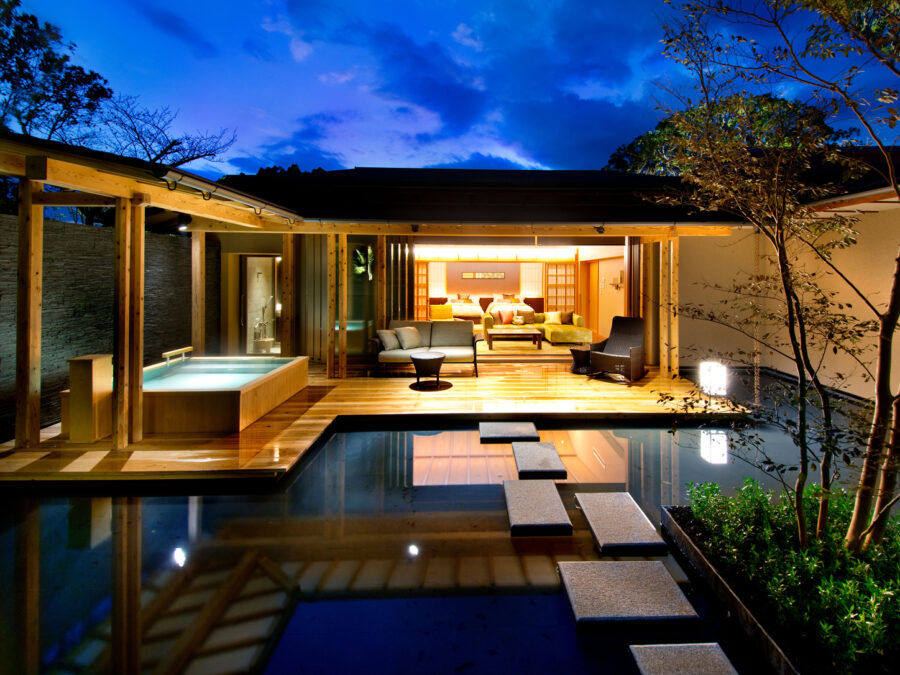
Luxury ryokan really take things up a notch—think private gardens, butlers, and a price tag that’ll make you pause. These are the spots locals dream about. The difference comes down to detail: top-notch ingredients, staff who anticipate your needs, and design that’s just stunning.
You’ll find luxury ryokan in famous onsen towns and scenic countryside. Many have their own hot spring baths, sometimes attached to your suite (which, honestly, ruins you for regular hotels). The design is next-level—zen gardens, traditional craftsmanship, maybe even a tea room or a lounge with mountain views.
Once, I stayed near Mount Fuji and my bath faced the volcano. Sunrise was unreal. If you’re celebrating something big, or just want a serious upgrade, luxury ryokan show you the very best of Japanese hospitality. Beds are extra plush, and breakfast? You’ll be thinking about it for weeks.
| Feature | What to Expect |
|---|---|
| Price | High |
| Service | Exceptional, personalized |
| Amenities | Private onsen, gourmet dining |
Rural and Regional Ryokan
Rural and regional ryokan are the true finds if you want a taste of authentic, slower-paced Japan and don’t mind a bit of adventure. These inns often sit in tiny villages or tucked-away valleys—sometimes just getting there is a story in itself (ask me about the time I missed the last bus).
The setting is the main draw: rice fields, cedar forests, rivers right outside your window. Many have their own onsen, or at least a big wooden bath with a nature view. The staff might not speak much English, but they make up for it with genuine warmth. I’ve had innkeepers offer me rides into town just because I looked a bit lost.
Food is super local—mountain veggies picked that morning, homemade miso, sometimes river fish grilled over a hearth. The pace is slower, and you get to see a slice of country life. If you’re craving peace or curious about what Japan felt like before the skyscrapers, rural ryokan are absolutely worth the trek.
| Feature | What to Expect |
|---|---|
| Location | Villages, countryside, nature |
| Baths | Often onsen or large wooden |
| Meals | Locally sourced, homestyle |
Popular Ryokan Destinations
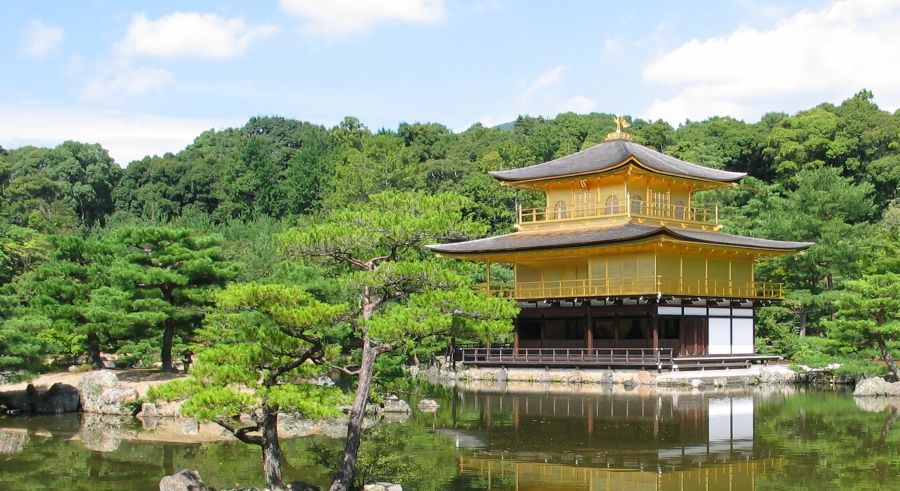
Japan’s packed with ryokan, but not every region delivers the same experience. Some areas ooze that classic vibe with hot springs, while others offer urban convenience or snowy mountain escapes. You’ll want to think about the kind of stay you’re after.
Kyoto and Kansai Region
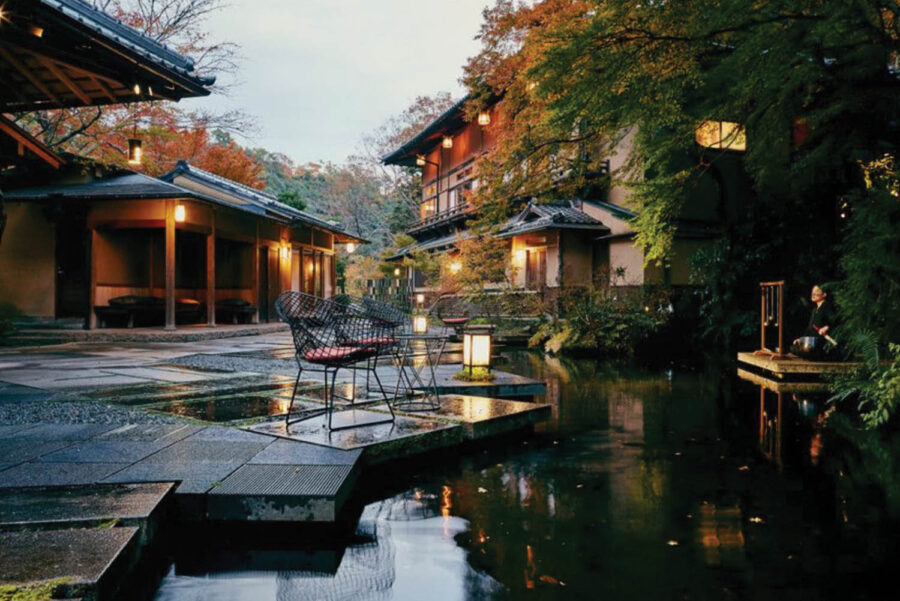
Kyoto is, hands down, the ultimate ryokan city. Waking up to temple bells, sliding open shoji doors, and sipping tea in your own little garden—it’s the stuff of travel dreams. Gion and the hills near Arashiyama are especially atmospheric.
The Kansai region stretches the ryokan experience beyond Kyoto—Osaka and Nara each have their own twist. I once had a breakfast in Uji that made me rethink tofu forever. You’ll find everything from centuries-old luxury inns to tiny, hidden spots. Prices can spike during cherry blossom season, so book early if you can.
Kyoto ryokan usually serve kaiseki dinners—those artful, multi-course meals. You might spend your evening soaking in a wooden tub with a garden view. Staff may not speak much English, but they’ll go out of their way to make you feel welcome. That’s the real magic.
Tokyo and Surrounding Areas
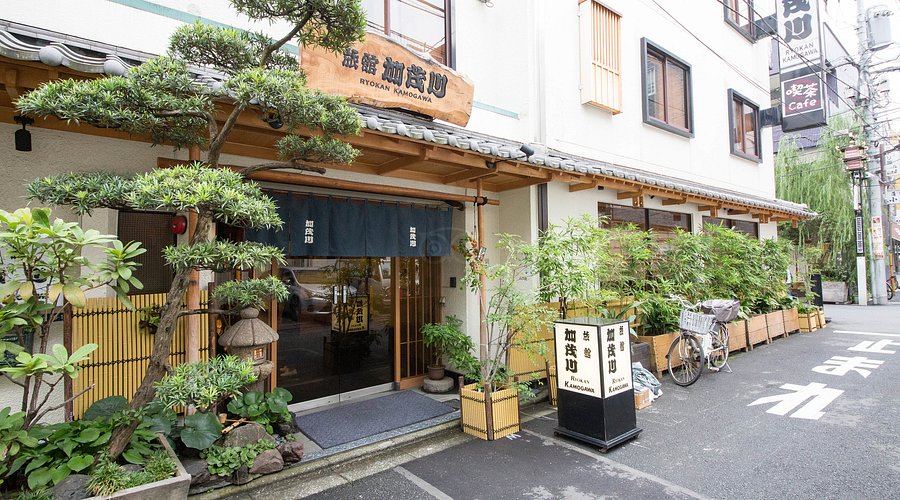
Tokyo isn’t usually the first place you’d look for a ryokan, but some cool surprises hide in the city. In older neighborhoods like Asakusa, you’ll find traditional ryokan that feel like a calm retreat from the city’s buzz.
Head just outside Tokyo and it gets even better. Spots like Chichibu or Okutama have classic inns—tatami mats, mountain food, and only a short train ride from Tokyo Station. If your schedule’s tight, these are a great intro to the ryokan experience.
Many ryokan around the city now cater to foreign travelers. Booking in English has gotten way easier, especially with the big sites listing more options. If you’re new to all this, a Tokyo-area ryokan is a great way to dip your toes in before heading deeper into Japan.
Osaka, Sapporo, and Hokkaido
Osaka might not top most ryokan wish lists, but there are stylish options near the station and up in the hills. They’re perfect if you want to spend your days snacking in the city and your nights on a quiet tatami mat.
Hokkaido, especially Sapporo, is a personal favorite. Ryokan here have a totally different vibe—snow in winter, crisp mountain air, and food that’s all about fresh seafood and dairy. Noboribetsu and Jozankei, both near Sapporo, are famous for volcanic hot springs and hearty dinners (crab nabe, anyone?).
In Hokkaido, you’ll spot ryokan with both Western-style and traditional rooms. I’ve totally caved and taken a nap on a western bed after too many nights on futons. They do a great job blending tradition and comfort. Don’t skip breakfast either—some of my best Japanese breakfasts happened up north.
Famous Onsen Towns: Hakone, Kusatsu, Izu Peninsula, Kinosaki, Arima Onsen
Hakone draws more overseas guests than anywhere else, and honestly, it makes sense. It’s close to Tokyo, has gorgeous lake views, and you’ll find loads of ryokan with private baths.
Even if you don’t speak Japanese, the staff here generally know how to help English-speaking travelers. That takes a lot of the stress out of the experience.
Head north and you’ll run into Kusatsu, which is legendary for its fiercely hot spring baths that steam right in the middle of town. Ryokan here lean traditional, and the vibe is often quieter—perfect if you want to just vanish for a bit.
But be warned, the sulfur smell hits hard (I actually like it, but it’s not for everyone).
Kinosaki Onsen is a gem—imagine strolling from bath to bath in a yukata and clogs, dipping into different ryokans as you go. Over on the Izu Peninsula, southwest of Tokyo, you’ll find seaside ryokan where you can eat fresh sashimi with the ocean breeze drifting in.
Arima Onsen near Kobe is ancient—some ryokans here have hosted guests for centuries.
| Onsen Town | Best Known For | Fun Fact |
|---|---|---|
| Hakone | Private baths, quick from Tokyo | Great for Mt. Fuji views |
| Kusatsu | Hot sulfur baths | Ancient hot spring rituals |
| Kinosaki | Bath-hopping in yukata | Seven historic public baths |
| Izu Peninsula | Seaside scenery and hot springs | Stunning coastlines |
| Arima Onsen | Gold & silver mineral waters | One of Japan’s oldest onsens |
In these towns, you can go all-in on the traditional side—wear your yukata everywhere, eat those crazy multi-course feasts, and nap to the sound of bubbling onsens.
If you only have one night for a ryokan in Japan, I’d nudge you toward one of these towns.
How to Book a Japanese Ryokan Online in English

Booking a ryokan online used to be a pain, but now? It’s honestly a breeze compared to even five years ago. Thanks to more English-friendly booking sites, you can compare, book instantly, and message staff without fumbling through Google Translate every minute.
Searching for Ryokan with English-Friendly Booking Sites
Trying to book a ryokan without Japanese skills once felt like a bad escape room. Now, you’ve got real options. Booking.com, Agoda, Rakuten Travel, and Japanican are all solid for English speakers (I’ve tested them plenty, especially when planning for fussy family).
You can filter by budget, meals, open-air baths, and non-smoking rooms—these sites actually tell you what’s available, not just dangle rooms that don’t exist. Some even show English reviews, which honestly saved me from accidentally booking a place with “surprise” shared bathrooms.
If you want more refined filters, check out Selected Onsen Ryokan. It lists onsen-focused stays and lets you see if they have private baths or family rooms.
I like bouncing between sites to sniff out deals, but keep an eye out for ryokan that only pop up on one platform or offer perks if you book direct. A few still don’t show up online at all, so sometimes you just have to send a simple English email.
Reservation Process Step by Step
Reserving a ryokan is basically like booking any hotel, just with a few extra quirks. Start by picking your dates, number of guests, and whether you want meals. Meals are a big deal at ryokan—don’t skip them if you want the full experience.
If rain’s in the forecast, double-check those cancellation policies.
Here’s how I usually roll:
- Search by area and apply filters (private bath, meals, price, etc).
- Read reviews and check photos (tatami mats in the rooms? You’re good).
- Look at room types—Japanese-style rooms mean futons, not beds.
- Pick your meal plan (dinner + breakfast is classic “half-board”).
- Enter guest info and special requests (allergies matter—kaiseki meals get creative).
Some sites let you reserve without prepaying, which is nice if you’re indecisive, but just know those rooms can vanish fast in popular towns.
And occasionally, you’ll still have to fill out an old-school form and wait for a reply (some traditions die hard).
Payment Methods and Policies
Here’s where things get interesting. Booking.com and Agoda usually let you pay by credit card ahead of time—super easy. But not all ryokan do online payments. Some want you to pay on arrival, and a few still prefer cash. It feels a bit retro, but that’s Japan for you.
Quick cheat sheet for ryokan payment:
| Site | Payment | Notes |
|---|---|---|
| Booking.com | Card/Pay at property | Some allow cash |
| Rakuten Travel | Card/Bank Transfer | Some Japanese only |
| Japanican | Card only | Rarely cash |
| Direct booking | Card/Cash (varies) | Ask in advance |
Watch out for strict cancellation policies. Some ryokan charge full price if you cancel within a week. If your travel plans are wobbly, hunt for places with flexible cancellation.
Confirmation and Communication
After you book, most English-friendly sites send a confirmation email with all your details. Hang onto this—it’s your golden ticket.
Sometimes, especially with smaller inns, staff will email you (usually in simple English) to ask about your arrival time or dinner preferences. Reply quickly; it shows you care and, honestly, it sometimes gets you better service.
If you need special meals—vegetarian, allergies, or if you just can’t handle raw squid—let them know early. Messaging through the booking platform usually gets a faster answer, but a polite email works too.
One time, I missed a train and had to change my arrival time last minute. A quick message through Booking.com saved my dinner, and the staff handled it like pros.
Comparing Major Ryokan Booking Platforms

Choosing where to book a ryokan in Japan isn’t always clear-cut, especially if you’re poking around in English. Each big hotel site—Booking.com, Agoda, Japanican, and Rakuten Travel—has its quirks, so knowing the differences can save you a lot of hassle.
Booking.com Advantages and Limitations
Booking.com is often the first result when you search for ryokan. It gives you a huge range of choices and plenty of English support. The interface is simple, and you can filter by budget, guest rating, or bath type—a must for onsen fans.
You also get tons of photos and reviews. If you’re picky about breakfast or whether the yukata is actually wearable, this is a lifesaver. Cancellation policies are usually clear and flexible, so if your plans shift (as mine often do), you can adjust.
But not every ryokan lists all their rooms or best rates here. Smaller, family-run places sometimes skip Booking.com, so you might miss a hidden gem tucked away in the hills. And sometimes, details about meals or onsen hours get lost in translation.
Using Agoda for Ryokan Reservations
Agoda is another strong choice, especially for overseas bookings. Sometimes Agoda has rooms that don’t show up anywhere else, so it’s worth checking if you’re after a specific ryokan or booking last-minute. I’ve caught special deals on Agoda for the exact same room.
The site’s interface works well, and customer support is usually decent in English. But, honestly, Agoda’s ryokan listings can be hit or miss. Some properties post lots of details, others barely give you anything. Double-check if breakfast or dinner is included before you book.
I keep a spreadsheet to track my bookings because Agoda’s account dashboard isn’t always the friendliest if you’re juggling a few reservations.
About Japanican and Rakuten Travel
If you want to find unique or very traditional ryokan, Japanican and Rakuten Travel are the local-focused platforms you’ll want. Japanican is run by JTB, one of Japan’s big travel agencies, so you’ll see ryokan you won’t find on Booking.com or Agoda. Many classic onsen towns show up here, including family-run inns in rural spots.
English support is generally solid, but sometimes the translations are a little odd.
Rakuten Travel lists a ton of ryokan, from countryside hideaways to big onsen hotels. Sometimes you’ll spot special meal plans or room types that don’t appear on Western sites. I’ve found rooms here that were invisible elsewhere. You can even collect reward points if you travel to Japan often.
Downside? Rakuten’s site can feel chaotic if you’re used to slick Western platforms. Some listings are Japanese-only, but with patience (and browser translation), you can usually muddle through. If you love the hunt for less-touristy Japan, Rakuten is worth learning.
When and Why to Consider a Traditional Travel Agent

Booking a ryokan online in English is usually easy, but sometimes you just hit a wall. Maybe it’s the language barrier, or you’re after something special.
Benefits for Unique or Remote Ryokan
Let’s be honest—a lot of the most beautiful ryokan hide out in rural areas and don’t play by the “Book Now” rules. Small, family-run inns often skip the big sites, and sometimes nobody on staff speaks English.
This is where a traditional travel agent with Japan chops can save you hours of frustration. Agents have direct contacts with ryokan owners and local partners. They can snag rooms at exclusive or remote places—like that quiet mountain inn or coastal retreat you saw in a random magazine.
You also get a real sense of which ryokan fit your style. Want a place run by a sweet old couple who serve trout for dinner? The agent can call and get those details. You won’t find that on most online lists. I once spent two days on Google Translate trying to message a ryokan in Gifu, but the agent sorted it in an hour.
- Ideal Use Cases:
- Private onsen baths not listed online
- Very rural areas with bad internet
- Last-minute changes or rare room types
Language Support and Customization
Have you ever tried to navigate a Japanese-only site with a browser translator? It’s rough. Travel agents bridge that gap and make sure nothing gets lost between you and the inn.
They’ll communicate dietary needs, room preferences, or even things like mobility issues. Once, I needed a room with an extra soft futon for my back. The agent knew exactly how to ask, and the innkeeper understood. That kind of detail matters—a lot more than you’d think.
How agents help with language:
| Agent Service | Example Benefit |
|---|---|
| Translation of requests | Clear allergy info shared |
| Explaining etiquette | No accidental faux pas |
| Custom planning | Private dinners requested |
Things just work better when you’re not guessing what anyone means. In Japan, hospitality is an art and good manners matter. It feels good knowing you’re understood, not just run through a translation app.
What to Expect During Your Stay
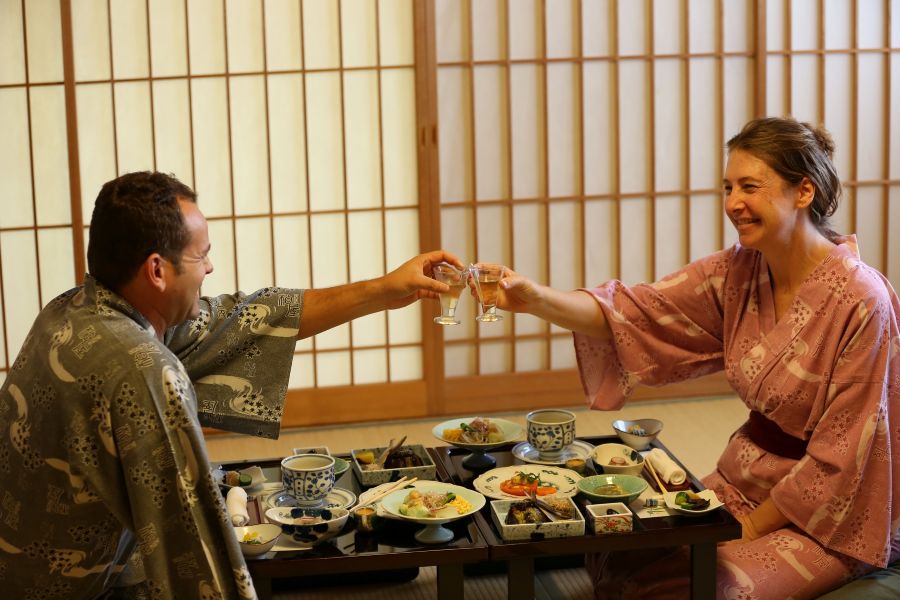
Walking into a ryokan feels like stepping into a different Japan—one that’s private, peaceful, and steeped in tradition.
You’ll notice unique room setups, special customs, and even a little ritual around bath time.
Room Types and Tatami Layouts
Ryokan rooms don’t really resemble typical hotel rooms. Instead, you’ll find tatami mats covering the floor—firm, woven grass that feels surprisingly smooth under bare feet. Never wear shoes or slippers on tatami; it’s a quick way to get a stern look from staff.
You’ll usually sleep on a futon mattress, which gets set up right on those mats. Some rooms are tiny and cozy for solo travelers, while others stretch out for families, with sliding shoji doors and maybe even a peek at a little garden or mountain view.
Low tables pop up here and there, perfect for tea or scribbling postcards. There’s almost always a little alcove with a scroll or flowers—honestly, that’s one of those details I wish Western hotels would steal.
Thin walls mean sound travels easily, so keep your voice down, especially at night. And if you’re tall? Watch those door frames—they’re not built for basketball players.
Yukata and Etiquette
When you check in, staff will hand you a yukata, a light cotton robe that’s kind of like Japanese pajamas. You’re actually supposed to wear it around, even to meals and sometimes out to the onsen. Wrap the left side over the right (not the other way), tie the sash at your waist, and don’t sweat perfection.
Take off your shoes at the entrance—seriously, don’t forget. Walk softly in the halls. If there’s tea waiting in your room, slow down and enjoy it; it’s more than a drink, it’s a little ritual. And yeah, keep your voice down in the common spaces. Ryokans feel calm because everyone plays along.
If you’re lost with the yukata or unsure about anything, just ask. Staff are usually happy to help, even if their English is a bit rough.
Onsen Bathing Tips
Onsen baths are a highlight for me, and probably will be for you too. But there’s a proper way to do things. Strip down completely—no swimsuits, no exceptions. Then, wash up at the shower stations before you even think about getting in the bath.
Most onsens are shared and divided by gender, but sometimes you luck out with a private bath attached to your room. Bring the small towel (they’ll usually give you one), but don’t dunk it in the water—just keep it on your head or set it aside.
- Wash up thoroughly before entering
- Don’t splash or swim; just soak and relax
- Tattoos can still be tricky, but more places are chill about them these days—worth checking ahead if you have ink
After a soak, crawling into your futon is pure bliss. I always sleep like a log.
Dining at a Ryokan
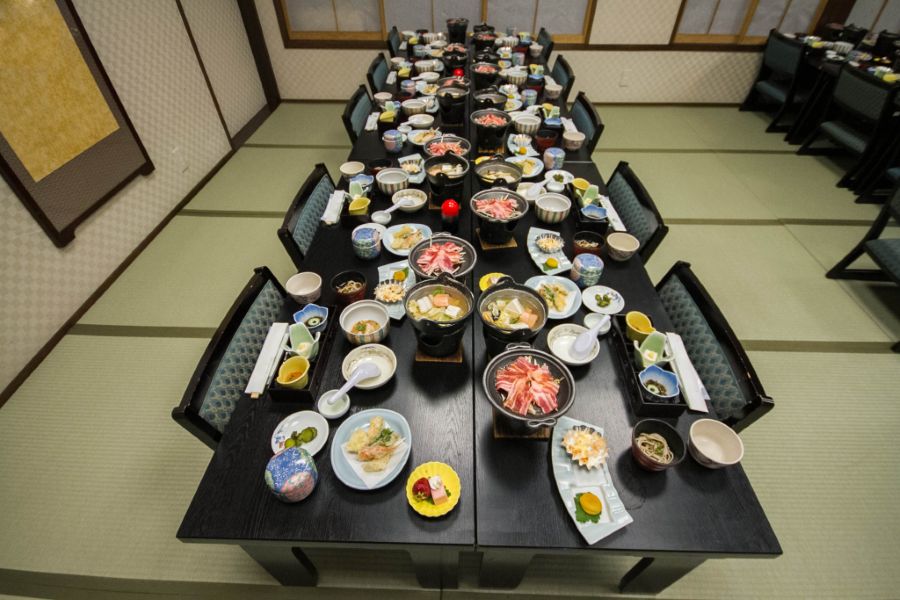
Eating at a ryokan is half the magic. You’re not just getting a bed; you’re tasting Japanese hospitality, bite by bite. If you have dietary needs, let them know well before you arrive.
Kaiseki Dinner Experience
Let’s be real: the kaiseki dinner is the main event. Kaiseki ryori is a multi-course meal that’s as much art as it is food. Tiny, beautiful plates—sometimes almost too pretty to eat, but you’ll want to eat them all anyway.
Dinner often comes to your room, but sometimes you’ll eat in a special dining hall. The menu changes with the seasons, so what you get depends on what’s fresh—wild greens in spring, root veggies and fish in winter. Expect a spread: sashimi, grilled fish, soup, pickles, rice, maybe a bit of tempura. Flavors are subtle, not heavy-handed. The first time I tried kaiseki, I honestly had no idea what half of it was, but every bite was delicious.
If you’re curious, ask the staff (often in kimono) to explain the dishes—they’re usually happy to share what makes each one special.
Example kaiseki courses:
| Course | Example Dish |
|---|---|
| Appetizer | Seasonal vegetable starter |
| Soup | Clear broth with seafood |
| Sashimi | Fresh local fish |
| Grilled Dish | Salt-grilled river fish |
| Simmered Dish | Braised mountain vegetables |
| Rice & Pickles | Steamed rice and homemade pickles |
| Dessert | Fruit or traditional sweets |
Breakfast Traditions
Ryokan breakfasts aren’t anything like Western buffets. You’ll usually get a Japanese-style breakfast set in your room or a calm dining area. Expect fluffy steamed rice, grilled fish (salmon or mackerel is common), miso soup that somehow tastes better in the morning, and an array of small dishes—pickled plums, sweet egg omelets, local veggies.
The first time I had fish for breakfast, I hesitated, but it’s surprisingly comforting. The rice is always just right—sticky and warm. If you don’t like something, don’t worry; there’s enough variety to skip a dish or two.
Sometimes you can pick between Japanese and Western breakfasts, but honestly, the Japanese set is the real draw. There’s something special about starting your day with local flavors and a view outside your window.
How to Communicate Dietary Restrictions
If you’re vegetarian, have allergies, or need to avoid certain foods for religious reasons, tell the ryokan before you book. Most traditional ryokans don’t speak much English, so emailing in simple language or using Google Translate helps a ton.
Be specific—“I cannot eat fish, seafood, or meat” works better than just saying “vegetarian.” Japanese meals often use dashi (fish stock), so even veggie dishes might have a surprise ingredient.
Here’s a message you can use:
- “I have dietary restrictions. I cannot eat (list foods). Can you prepare a meal for me? Thank you.”
A few things to keep in mind:
- Double-check if they can accommodate you before you book
- Don’t assume; small ryokans can’t always make big changes on short notice
- Learn a few basic food words in Japanese; it’s a lifesaver
Most hosts want to help, but a heads-up makes it easier for everyone.
Essential Tips for Booking Success
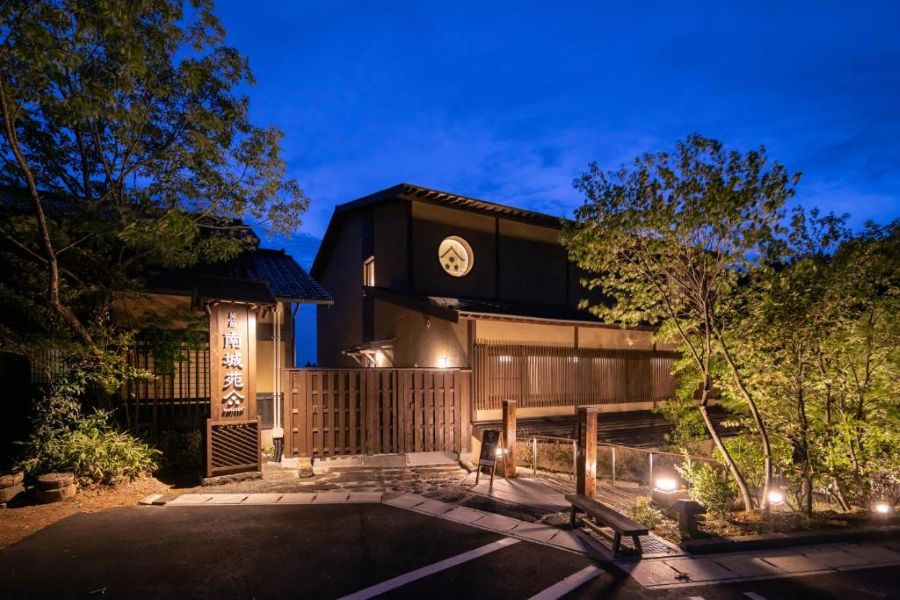
Booking a ryokan isn’t like grabbing a hotel room. You’re signing up for a unique experience, with its own quirks and rules. A bit of prep saves you hassle, money, and awkward moments.
Booking in Peak Versus Off-Peak
If you want cherry blossoms or autumn leaves, prepare to battle crowds for those tatami rooms. Spring (late March–April) and fall (October–November) get booked out months ahead, with locals and tourists both in the mix.
Prices jump during busy seasons, and minimum stays sometimes apply. Weekends fill up fast too, so if you can swing a weekday, you’ll have better luck. Off-peak months—like early winter or mid-summer—are easier and sometimes cheaper. I once wandered into an onsen town in July and scored a fantastic ryokan last minute, so it’s not impossible if you’re spontaneous.
But in high season, don’t wait. If you see a room on Booking.com or Rakuten Travel, book it first and think later—free cancellation is a lifesaver.
Special Room Requests
Ryokan rooms can be quirky. Maybe you want a private bath, or you can’t sleep on futons. When booking, check the room descriptions for these details, but sometimes things get lost in translation.
After booking, send a quick message in simple English:
Hello, we have booked a room for [dates]. May we have a non-smoking room with a private bath if available? Thank you!Staff are used to these requests, even if their replies are short. If you have allergies or mobility needs, let them know right away. In my experience, ryokan owners really do want to help if you ask.
Sometimes, you can snag a room upgrade for a small fee, but you’ll need to ask or spot it on their website. Always worth a shot.
Cancellation and Change Policies
Ryokan cancellation policies are usually stricter than hotels. Many charge fees if you cancel less than a week ahead, and in peak season, some keep 100% if you cancel 2-3 days out. That can sting if you’re used to free last-minute cancellations.
Always check the policy before you confirm your reservation.
| Policy Type | Typical Notice Needed | Fee Charged |
|---|---|---|
| Standard | 2-7 days | 10%-50% of booking |
| Peak Season | 7-14 days | Up to full amount |
| Same-Day Cancel | None | Full amount |
If your plans aren’t set in stone, filter for ryokans with free cancellation. Changing your reservation (dates or number of people) can mean a different room or price—double-check with the property to avoid surprises.
I learned this the hard way once; changed my dates last minute and my included dinner just vanished. Always confirm the details, especially if meals or private baths are what drew you in.
Frequently Asked Questions
Booking a Japanese ryokan in English can feel overwhelming, especially with all the cultural quirks and options. A little planning goes a long way.
What are the top websites for booking a Ryokan in Japan with English support?
I usually go with Booking.com or Agoda for ryokan stays. They have plenty of options, clear English info, and real reviews—which, honestly, I always check.
Rakuten Travel and Japanican are also solid for authentic ryokan finds. For the really tiny, family-run places, sometimes their own website (with a little Google Translate magic) is the only way in.
Can I book a Ryokan in Japan with onsen facilities directly online?
Absolutely. Most big booking sites let you filter for “onsen” or hot springs, so you don’t have to scroll forever. I always check the photos, because that hot spring might be private or shared.
Some old-school ryokans still only take phone or email bookings, but more are going online every year. If you’ve got your heart set on a specific place, a simple email in English often does the trick.
Sometimes dinner and breakfast are included, sometimes not—it can get confusing. Always check what’s in the rate before booking. Those traditional meals, if not included, can cost quite a bit extra.
There’s also the local bath tax, which usually isn’t shown on international sites. It’s a couple hundred yen per person, paid at checkout. Not a big deal, but it surprised me the first time.
What should I consider when choosing the right Ryokan for my stay in Japan?
Start with location—seriously, it makes a huge difference. If you want to wander temples or hit up local izakayas after your bath, staying nearby saves a ton of hassle.
Think about whether you’re after a sprawling ryokan packed with amenities or one of those tiny, almost secret places where the staff remembers your name. Some travelers swear by the smaller, family-run spots for that extra warmth you just can’t fake.
If soaking in an onsen is a must for you, dig into the reviews. You might discover that some baths close early or only allow certain genders at specific times, which can really throw a wrench in your plans if you’re not careful.
Formality varies a lot—some ryokan have a strict vibe with set meal times and rules, while others feel way more relaxed. I always read a handful of recent guest stories to get a sense of the atmosphere. If the photos or wording seem off, I just keep scrolling. There’s no shortage of options, so trust your instincts.
How far in advance should I make a reservation for a popular Ryokan in tourist areas of Japan?
If you’re eyeing cherry blossom season or those fiery autumn leaves, book crazy early. I’ve seen the best places in Kyoto or Hakone fill up six months out, sometimes even more.
Outside of peak times, I try to lock things in at least a month or two ahead. Now, if you’re the spontaneous type, you might luck out with a last-minute gem in a lesser-known town, but for those iconic ryokan? I wouldn’t risk it.
What are essential etiquette guidelines to know when staying at a Ryokan in Japan?
First thing: always slip off your shoes at the entrance—seriously, don’t even think about skipping this. Usually, you’ll spot a rack of indoor slippers waiting for you, but leave those right outside the tatami rooms.
When it comes to onsen baths, the rules might catch you off guard if you’re not ready. Scrub yourself clean with soap before hopping in, and swimsuits? Not a chance. Also, keep towels out of the water—just set them aside.
I remember feeling a bit anxious about messing up during my first ryokan stay. Luckily, the staff guided me through it with a lot of patience.
You’ll probably end up wearing a yukata (that comfy cotton robe) around the ryokan, even at dinner. If you’re not sure what to do, just ask. Most hosts have seen it all, and honestly, getting a little lost is part of the fun.
Politeness goes a long way, and a smile covers a multitude of etiquette blunders. If you’re ever in doubt, take a breath and enjoy the experience—half the charm is figuring it out as you go.



